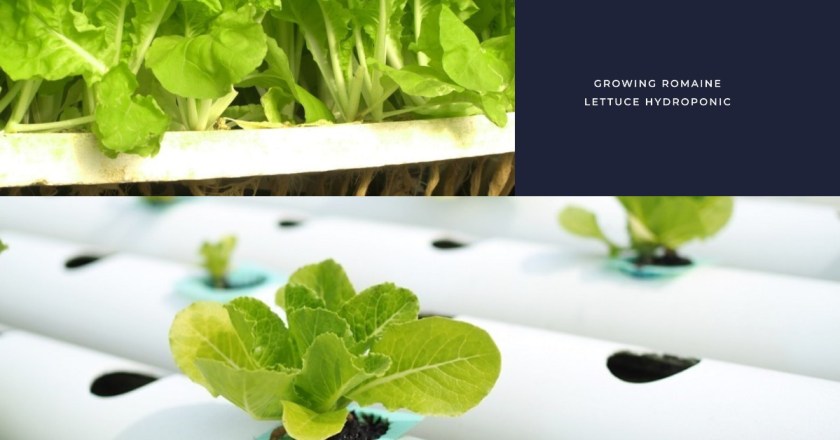Want to grow fresh and healthy romaine lettuce all year round? This ultimate guide to romaine lettuce hydroponic growing has got you covered!

If you’re a fan of fresh and crisp romaine lettuce, you may be interested in growing your own supply at home. Hydroponic growing is a popular method for producing lettuce year-round, and it’s easier than you might think. This guide will walk you through the steps to successfully grow romaine lettuce using hydroponics.
What is hydroponic cultivation?
Hydroponic cultivation is a method of growing plants without soil. Instead, plants are grown in a nutrient-rich water solution that provides all the necessary nutrients for growth.
This method of cultivation is becoming increasingly popular due to its many benefits, including faster growth rates, higher yields, and the ability to grow plants in areas with poor soil quality.
Hydroponic romaine lettuce is a great example of how this method can be used to grow healthy and delicious produce all year round.
Choose the right hydroponic system.
The first step in growing romaine lettuce hydroponically is to choose the right system. There are several types of hydroponic systems available, including deep water culture, nutrient film technique, and drip irrigation.
Each system has its own advantages and disadvantages, so it’s important to choose the one that best fits your needs and budget.

Consider factors such as space, cost, and ease of use when selecting your hydroponic system could result in higher yield.
How to set up a hydroponic system for romaine lettuce.
Setting up a hydroponic system for romaine lettuce is relatively simple and can be done in a small space. You will need a container to hold the nutrient solution, a pump to circulate the solution, and a growing medium to support the plants.
Romaine lettuce grows well in a variety of growing mediums, including coconut coir, perlite, and vermiculite. Once you have your system set up, you can start growing your own delicious and healthy romaine lettuce all year round.
Benefits of Romaine Lettuce Hydroponically.
Developing romaine lettuce hydroponically offers a few advantages, including quicker development, reliable quality, and expanded yield.
Tank-farming frameworks give a controlled climate that advances ideal plant development and can bring about a more uniform harvest. Furthermore, tank-farming cultivating utilizes less water and space than customary soil-based cultivating, making it a more feasible choice.
Generally speaking, developing romaine lettuce hydroponically can offer a more proficient and harmless to the ecosystem method for creating this well known verdant green.
Select the right variety of romaine lettuce.
When it comes to growing romaine lettuce hydroponically, selecting the right variety is crucial. Some popular varieties for hydroponic growing include Parris Island Cos, Little Gem, and Outrageous.

These varieties are known for their crisp texture, sweet flavor, and resistance to disease. It’s important to research and choose a variety that will thrive in your specific hydroponic system and growing conditions to get better output from small area.
Provide the right nutrients and pH levels.
In hydroponic growing, it’s important to provide the right nutrients and pH levels for your romaine lettuce to thrive. The ideal pH range for romaine lettuce is between 5.5 and 6.5. You can adjust the pH levels using pH up or pH down solutions.
As for nutrients, romaine lettuce requires a balanced mix of macronutrients (nitrogen, phosphorus, and potassium) and micronutrients (calcium, magnesium, iron, and others).
You can use a pre-made hydroponic nutrient solution or create your own using a hydroponic nutrient calculator. Make sure to monitor the nutrient levels regularly and adjust as needed.
Control the temperature and humidity.
Temperature and humidity are crucial factors in hydroponic romaine lettuce growing. The ideal temperature range for romaine lettuce is between 60-70°F (15-21°C) during the day and 55-65°F (13-18°C) at night.
Humidity levels should be kept between 40-60%. High humidity can lead to fungal diseases, while low humidity can cause the plants to dry out.

Use a thermometer and hygrometer to monitor the temperature and humidity levels in your growing area and adjust as needed. You can also use fans or dehumidifiers to regulate the temperature and humidity.
Harvest and enjoy your fresh romaine lettuce.
Once your romaine lettuce has reached maturity, it’s time to harvest and enjoy your fresh, homegrown produce! Use a sharp knife or scissors to cut the leaves at the base of the plant.
Leave the outer leaves intact so that the plant can continue to grow and produce more leaves. Rinse the leaves thoroughly with water and pat them dry with a clean towel.
Your romaine lettuce is now ready to be used in salads, sandwiches, wraps, and more! Enjoy the taste of fresh, healthy produce all year round with hydroponic romaine lettuce growing.
